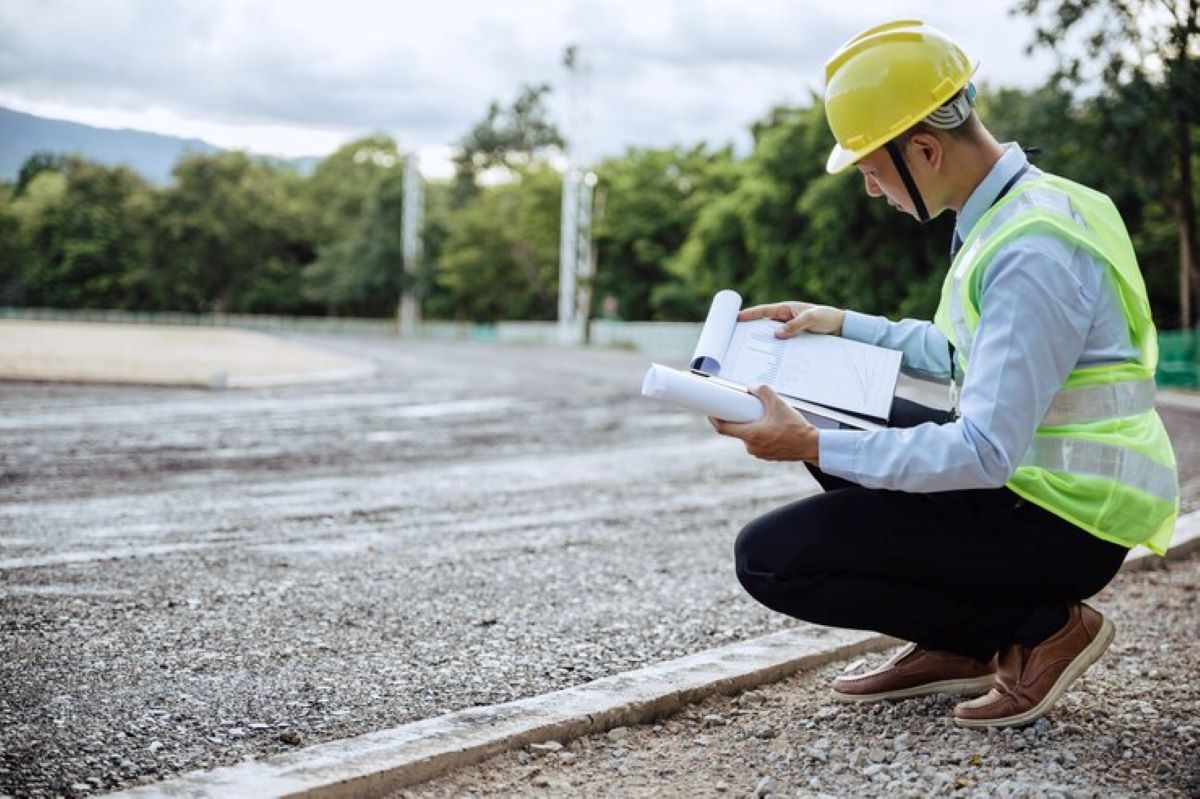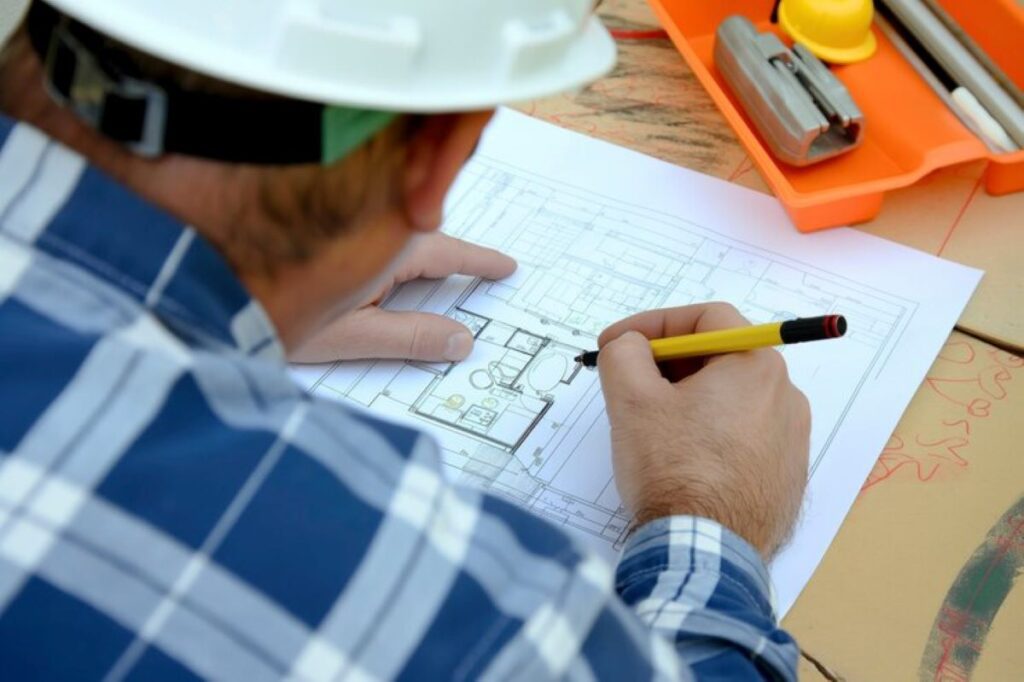What Does a Cadastral Surveyor Do? A Complete Guide

Cadastral surveyors play a vital role in land management and development. Their expertise in property boundary determination, land measurements, and land-use planning is essential for legal documentation and title establishment. This guide will explore the responsibilities, historical context, processes, significance, and career prospects of cadastral surveyors.
Understanding the Role of a Cadastral Surveyor
The role of a cadastral surveyor encompasses several responsibilities that are critical to the management of land resources. These professionals blend technical skills with legal knowledge to create accurate and legally sound land surveys. Their work is foundational in ensuring that land transactions are conducted fairly and transparently, which is essential for both individual property owners and larger development projects.
Cadastral surveyors assist in defining property lines and conducting surveys necessary for land titles. They also play an essential role in the maintenance of land records and provide expert testimony in disputes regarding land boundaries. Their expertise is often sought in various scenarios, from residential property disputes to large-scale infrastructure developments, where precise land measurements are crucial for planning and execution.
Key Responsibilities of a Cadastral Surveyor
The key responsibilities of a cadastral surveyor can vary based on their specific employment context, but some common tasks include:
- Conducting boundary surveys to determine land ownership.
- Preparing and updating land-related documents and maps.
- Collaborating with land use planners and governmental organizations.
- Providing consulting services to clients on property regulations and development planning.
- Participating in land valuation processes and easement determinations.
Each of these responsibilities requires a balance of technical expertise and familiarity with legal frameworks governing land ownership and usage. Moreover, cadastral surveyors often work closely with other professionals, such as architects and civil engineers, to ensure that land use is optimized and compliant with local regulations. Their work not only helps in resolving disputes but also aids in urban planning and environmental conservation efforts, making their role vital in sustainable development.
Required Skills and Qualifications
To become a successful cadastral surveyor, one needs a blend of skills and formal education. Most cadastral surveyors have a degree in surveying, geomatics, or a related field. Additionally, obtaining a professional license is often necessary, which entails passing comprehensive exams and completing a designated amount of practical experience. This rigorous training ensures that surveyors are well-equipped to handle the complexities of land measurement and legal documentation.
Essential skills for cadastral surveyors include:
- Proficiency in surveying technology and geographic information systems (GIS).
- Strong analytical and problem-solving abilities.
- Excellent communication and interpersonal skills for effective client engagement.
- A sound understanding of legal principles related to land ownership.
Continuous education is crucial as well, given the evolving nature of land laws and surveying technologies. Many cadastral surveyors engage in professional development courses to stay updated with the latest advancements in surveying equipment, software, and regulatory changes. This commitment to lifelong learning not only enhances their skill set but also ensures that they can provide the most accurate and reliable services to their clients, thereby maintaining the integrity of the land surveying profession.
The History and Evolution of Cadastral Surveying
Cadastral surveying has a rich history that reflects the development of land ownership concepts. Understanding its evolution helps clarify current practices and principles in the field.
Ancient Roots of Cadastral Surveying
The origins of cadastral surveying can be traced back to ancient civilizations, where land was marked and recorded for taxation and ownership purposes. The Egyptians, for instance, developed methods of land measurement around 3000 BC, employing rudimentary geometry and tools to survey agricultural land after the annual Nile floods.
Similarly, the Romans implemented systematic surveying practices that included the use of grids and boundaries, enforcing land rights across their territories. This historical foundation laid the groundwork for the modern systems of land registration and property laws. The Roman approach was particularly influential, as it not only standardized land measurement but also established legal frameworks for ownership that would resonate through the ages, influencing many legal systems worldwide.
Modern Developments in Cadastral Surveying
With advances in technology, cadastral surveying has undergone significant transformations. The introduction of geospatial technology and software has revolutionized the way land is surveyed and mapped. Digital tools such as GPS and GIS have enhanced precision and efficiency, allowing surveyors to capture data more accurately than ever before.
Today’s cadastral surveyors also utilize drones and remote sensing techniques for large-scale surveys, further promoting innovation in the profession. As land management becomes increasingly complex, these developments are vital for supporting sustainable land use practices. Moreover, the integration of big data analytics into cadastral surveying allows for better decision-making processes, enabling surveyors to analyze trends in land use and ownership patterns over time. This capability not only aids in urban planning and development but also plays a crucial role in environmental conservation efforts, ensuring that land resources are utilized responsibly and sustainably for future generations.
The Process of Cadastral Surveying
The process of cadastral surveying involves several key stages, each contributing to the creation of accurate and legally binding surveys.
Initial Research and Planning
Before fieldwork begins, cadastral surveyors conduct extensive research to gather information about the land in question. This includes reviewing historical land records, existing surveys, and legal documents. Effective planning is critical for the successful execution of the survey, ensuring that all necessary resources and data are in place. Surveyors often collaborate with local authorities and land registries to obtain the most up-to-date information, which helps in identifying any potential issues that may arise during the survey process. This preparatory phase not only sets the groundwork for the survey but also helps in establishing communication with stakeholders, which can be vital for addressing any concerns or questions that may surface later.

Field Work and Data Collection
Once research is complete, the surveyor moves to the fieldwork phase. This involves physically measuring the boundaries of the land, often with electronic instruments like total stations and GPS devices. The surveyor documents the topography and any existing structures or features that may affect the property lines. This phase is not just about taking measurements; it also requires a keen eye for detail, as surveyors must observe and record natural features such as rivers, hills, and vegetation that could influence boundary definitions.
Data collection is meticulous, as accuracy is paramount in establishing legal boundaries and avoiding disputes. The surveyors adhere to strict protocols during this process to ensure consistency and reliability. Additionally, they may employ various techniques, such as triangulation and leveling, to enhance the precision of their measurements. The integration of modern technology, such as drones for aerial surveys, has also revolutionized this stage, allowing for more comprehensive data collection over larger areas in a fraction of the time.
Map Creation and Report Preparation
After field data has been collected, cadastral surveyors prepare detailed maps and reports. These documents present the findings in an organized manner, illustrating property boundaries, areas, and relevant legal information. The maps often include layers of information, such as zoning classifications, easements, and rights-of-way, which are crucial for understanding the full context of the land being surveyed.
The created maps serve as critical tools for various stakeholders, including landowners, government authorities, and developers. Clear and accurate representations of land data facilitate informed decision-making and dispute resolution. Furthermore, the reports typically include a summary of the methodologies used during the survey, any challenges encountered, and recommendations for future actions, providing a comprehensive overview that can be referenced in ongoing land management and development projects. This thorough documentation ensures that all parties have a clear understanding of the survey results and their implications for property ownership and land use planning.
The Importance of Cadastral Surveying in Land Management
Cadastral surveying is pivotal in ensuring effective land management, impacting various aspects of property ownership and development.
Defining Property Boundaries
One of the primary functions of cadastral surveying is to define property boundaries. This precision helps property owners understand their land rights and responsibilities, preventing encroachments and disputes. Accurate boundary demarcation is particularly crucial in densely populated areas where land use is contested.
Resolving Land Disputes
Land disputes are a common occurrence, often stemming from ambiguous property lines. Cadastral surveyors provide expert assessments in these situations, using legal knowledge and surveying data to resolve conflicts. Their expertise aids in mediation processes and provides clarity to courts when disputes lead to litigation.
Facilitating Land Development and Planning
Cadastral surveyors also play a significant role in land development and urban planning. By preparing accurate surveys and maps, they assist in zoning compliance, infrastructure development, and environmental assessments. Their input is crucial for ensuring that new developments align with regulatory frameworks and local land use objectives.
Career Prospects for Cadastral Surveyors
The demand for skilled cadastral surveyors continues to grow, driven by urbanization, real estate development, and an increased focus on sustainable land management.

Job Market Outlook
Potential Career Paths and Specializations
Cadastral surveyors have opportunities to specialize in various areas, including land development, environmental surveying, and urban planning. With suitable experience, they may advance to positions such as project managers, GIS specialists, or even executive roles within surveying firms.
Continuing Education and Professional Development Opportunities
To stay relevant in the field, cadastral surveyors should engage in continuing education and professional development. Certification programs, workshops, and conferences provide opportunities to learn about the latest technologies and regulatory changes. These initiatives enhance their skills and knowledge, ultimately benefiting their careers and the land management sector.
In conclusion, cadastral surveyors play an indispensable role in managing land resources, ensuring property rights, and facilitating development. Their efforts have profound implications for legal security, urban planning, and environmental sustainability, shaping the future of land use for generations to come.
Related : How an Engineering Surveyor Supports Infrastructure Projects

Leave a Reply